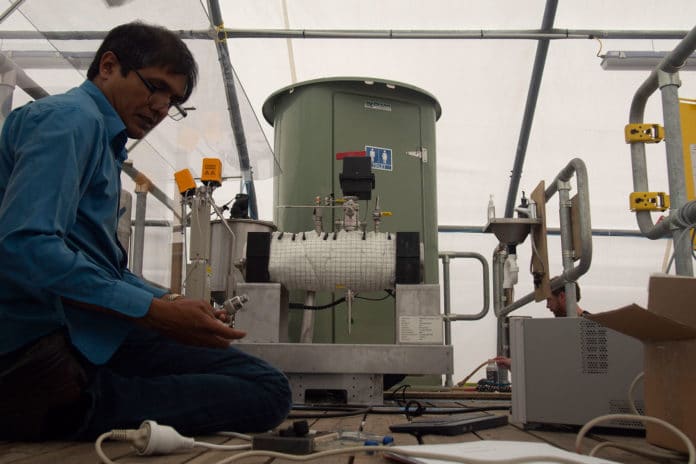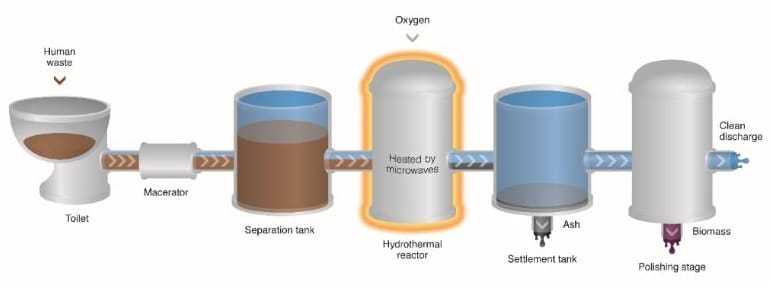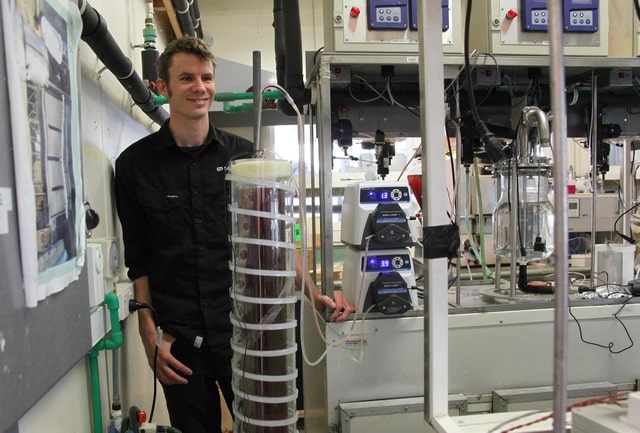Hygienic sanitation facilities are crucial for public health. Around 68% of the world’s population, 5.0 billion people, use at least a basic sanitation service. According to WHO, 2.3 billion people still do not have access to safe and affordable sanitation systems. This means they have to put themselves in an unhealthy, uncomfortable, or dangerous situation every time they go to the bathroom.
The Bill and Melinda Gates Foundation believes that innovation technologies can solve this problem. Through its ‘Reinvent The Toilet Challenge,’ the foundation has recruited scientists and engineers from around the world to create new types of toilets and public sanitation systems for places that can’t afford modern upgrades.
New Zealand-based Scion Research, one of the companies funded by the foundation, is developing a new type of toilet that uses pressure and microwave technology to treat sewage right in people’s homes.
“We get to flush here and it gets out of our household and treated and discharged into the environment and we’re removed from the issue so we don’t have to handle it personally or live amongst it. In a large part of the developing world that’s not the case. Their proximity to their waste is constant and the risk of disease is high,” says Daniel Gapes, an environmental engineer working on the project.
The Scion Research team uses a technology that is fairly well known in large-scale applications. The method is called wet oxidation, and it is also used in mining and sewage treatment.
Wet oxidation is a hydrothermal treatment process that uses oxygen, heat, and pressure to break down materials. It can destroy toilet waste solids and completely kill pathogens by oxidizing organics and oxidizable inorganic components at temperatures between 150 and 374°C and pressures between 0.5 and 20 MPa.
“What would happen in that environment over a period of an hour is that organic material will oxidize. It gets converted to carbon dioxide and water. Just heating under oxygen pressure. It’s quite amazing,” says Gapes.
This byproduct is completely sterile—a clear liquid that can be treated and passed through a filtration membrane to produce purified water and ash containing a high content of phosphorous, a chemical element used in fertilizer.
The biggest challenge that the team has faced was to create a small household system that contains heat and pressure in a way that is safe to have in a residence.
Now, the team is working on developing a microwave reactor. Microwaves are good at quickly and directly heating the waste material rather than the reactor body itself. The microwave reactor can heat the waste material to 260ºC speed, yet the technology has not been adopted by any of the other parties in the Reinvent the Toilet Challenge.
“Using different and unique technology allows us to add something new to the collective knowledge of the toilet challenge parties. We could potentially provide a solution that might benefit another one of the parties,” explains Dr. John Andrews, who leads Scion’s toilet team. “We work collaboratively because we’re all working on the same problem.”
Actually, the Gate Foundation’s challenge was to create a toilet without piped-in water, a sewer connection, or outside electricity—all for less than US$0.05 cents per user per day. Gapes says ideally, when finished, it will cost even less than that. “It needs to feel like a regular toilet,” says Gapes. The challenge is really high.”
This technology has shown great promise for treating human waste, whether in developing countries around the world, New Zealand’s cities, the backcountry, or global disaster zones.


